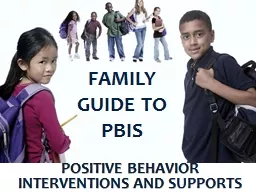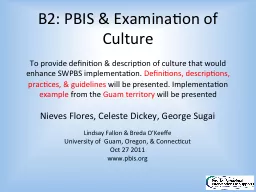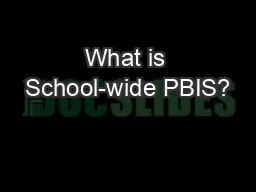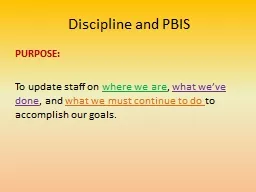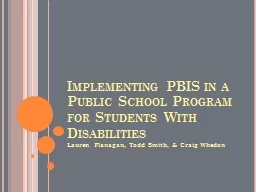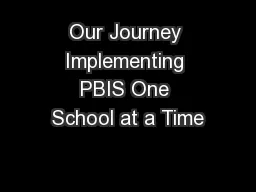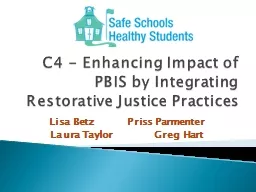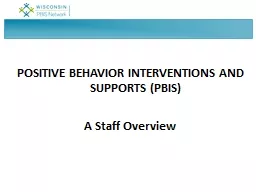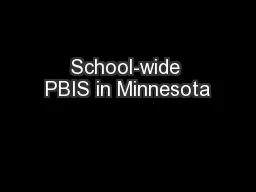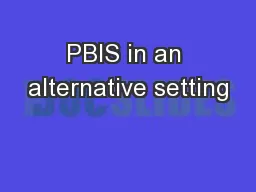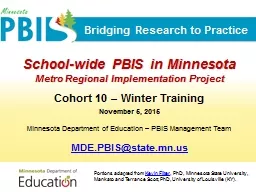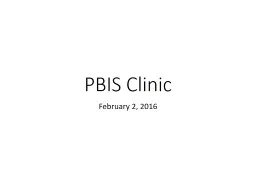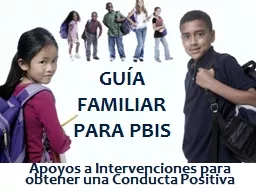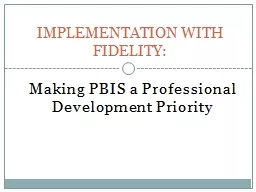PPT-FAMILY GUIDE TO PBIS
Author : ellena-manuel | Published Date : 2020-01-17
FAMILY GUIDE TO PBIS POSITIVE BEHAVIOR INTERVENTIONS AND SUPPORTS 1 Developed by In Cooperation With 2 What do we do Problem Behavior 3 MOST OFTEN WE Get Angry Punish
Presentation Embed Code
Download Presentation
Download Presentation The PPT/PDF document "FAMILY GUIDE TO PBIS" is the property of its rightful owner. Permission is granted to download and print the materials on this website for personal, non-commercial use only, and to display it on your personal computer provided you do not modify the materials and that you retain all copyright notices contained in the materials. By downloading content from our website, you accept the terms of this agreement.
FAMILY GUIDE TO PBIS: Transcript
Download Rules Of Document
"FAMILY GUIDE TO PBIS"The content belongs to its owner. You may download and print it for personal use, without modification, and keep all copyright notices. By downloading, you agree to these terms.
Related Documents

